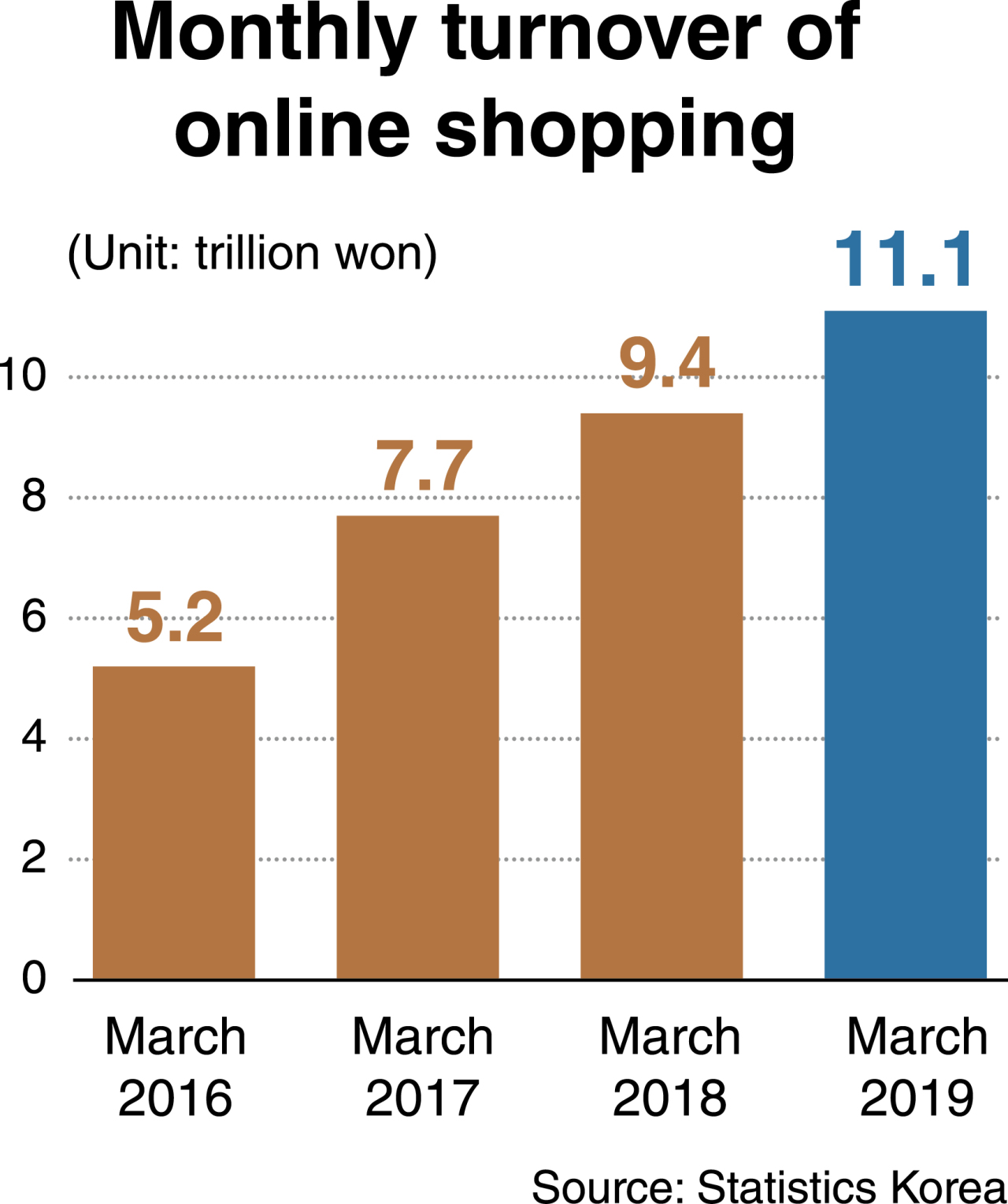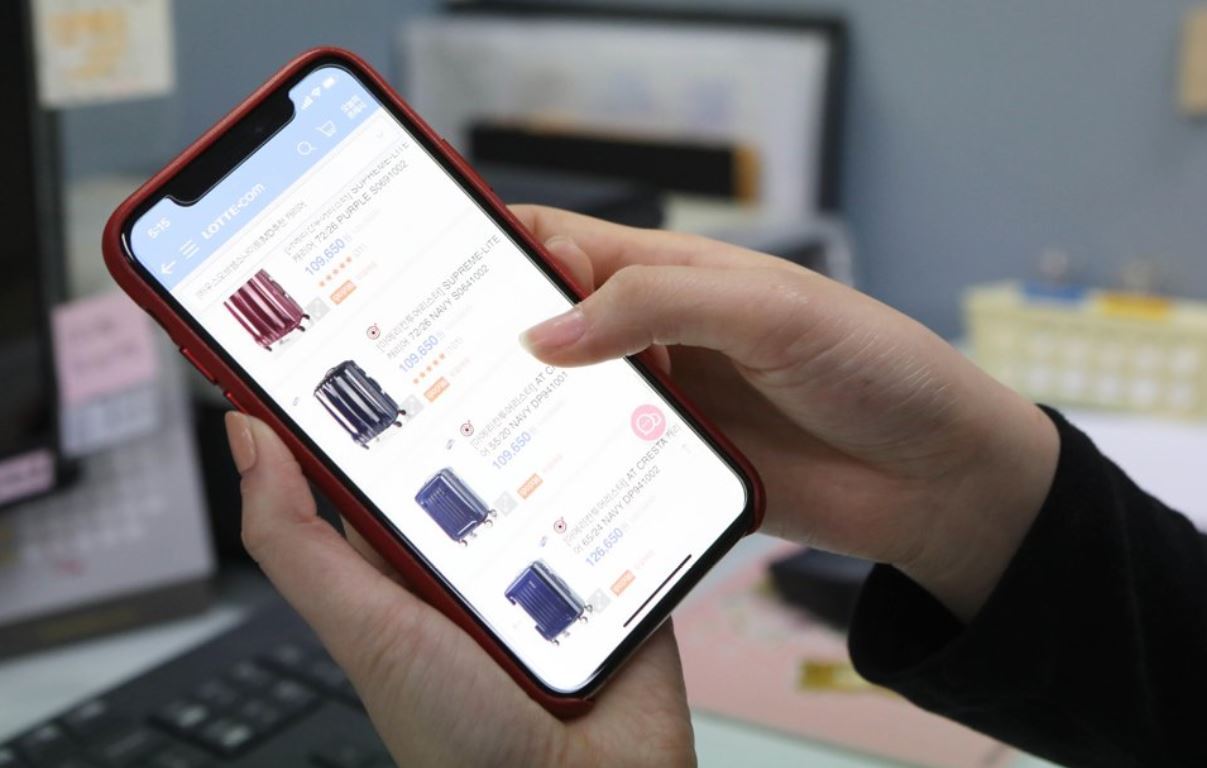[News Focus] Online shopping expands more than 100% in 3 years
By Kim Yon-sePublished : May 26, 2019 - 15:49
SEJONG -- South Koreans have sharply increased their shopping through computers and smartphones in recent years, which is taking up more than 20 percent of their total consumption.
The rapid growth of online shopping transactions has been backed by systematic parcel delivery services, which send products to consumers across the country in one to three days.
Almost every kind of product -- from drinking water, food and cosmetics to clothing, home appliances and furniture -- are available on online shopping malls. A growing proportion of consumers were found to have purchased goods offered by department stores and large discount chains via the internet over the past few years.
The rapid growth of online shopping transactions has been backed by systematic parcel delivery services, which send products to consumers across the country in one to three days.
Almost every kind of product -- from drinking water, food and cosmetics to clothing, home appliances and furniture -- are available on online shopping malls. A growing proportion of consumers were found to have purchased goods offered by department stores and large discount chains via the internet over the past few years.

Three years ago, in March 2016, the collective monthly turnover of retailers operating online shopping malls was 5.2 trillion won ($4.3 billion), according to Statistics Korea.
It has grown continuously -- to 7.7 trillion won in March 2017, 9.4 trillion won in March 2018, and an all-time high of 11.1 trillion won in March 2019. The monthly figure marked a 113.4 percent surge in only three years.
By type, sales of online-only malls totaled 7.50 trillion won, while those at malls operating offline and online stores came to 3.68 trillion won in March.
Data suggested that the smartphone shopping percentage has further grown in particular. The proportion of mobile shopping of the total online sales has increased from 51.9 percent to 62.5 percent over the corresponding three-year period.
The monthly turnover exceeded the 10-trillion-won mark in October 2018 for the first time in history after topping 8 trillion won in November 2017.
Last year, tour and transportation products topped the list in the proportion of online shopping with 13.8 percent, followed by clothes at 11.2 percent, electronic goods at 10.4 percent, food at 9.1 percent, cosmetics at 8.5 percent and daily necessities at 7.9 percent.
Experts forecast the yearly online transactions will surpass 130 trillion won in 2019, a further progress from 111.8 trillion won in 2018.
A director general of Statistics Korea said the figures show “changing consumption trends like diversification of food retail services or preference for convenience food.”
Recently, local specialties including fresh agricultural products in rural districts nationwide are drawing popularity online.
“Local farmers from nine provinces deliver consumers soy-sauce marinated crabs, leaf mustard kimchi, groundsel-flavored macaroons and makgeolli (alcoholic drinks from brewed rice),” said an official of the Ministry of Agriculture, Food and Rural Affairs.
“More urbanites are attracted to home-made food or liquor products from micro-businesses in rural areas on the back of direct deals online,” he said. “The consumption trend is positive in terms of elevating the income level of farming, forestry and fishery households.”

Meanwhile, an online mall operator in Gyeonggi Province pointed out that a major internet portal holds an oligopolistic status by providing settlement platforms to agricultural or industrial goods producers.
He claimed that the sales disparity between large and smaller online malls is widening, saying that high services charges for consumers’ credit card payments are also a burden for micro-mall operators.
Nevertheless, retailers welcome the rapid growth in online sales. A beef tripe seller at a traditional market in Incheon said she could be able to sell her well-known products on TV not only to local citizens but also to consumers across the country.
She sells products via both her own online mall and a platform offered by an internet portal operator.
Industry insiders say a noteworthy point in 2018 is that a growing number of people aged 60 or over have become customers of online retailers.
“Seniors are the main buyers of goods with high price tags. They purchase products such as luxury fashion items, couches, and high-end air conditioners or TVs,” said a retail industry analyst in Yeouido, Seoul.
By Kim Yon-se (kys@heraldcorp.com)












![[Today’s K-pop] BTS pop-up event to come to Seoul](http://res.heraldm.com/phpwas/restmb_idxmake.php?idx=644&simg=/content/image/2024/04/17/20240417050734_0.jpg&u=)




![[KH Explains] Hyundai's full hybrid edge to pay off amid slow transition to pure EVs](http://res.heraldm.com/phpwas/restmb_idxmake.php?idx=652&simg=/content/image/2024/04/18/20240418050645_0.jpg&u=20240418181020)

![[Today’s K-pop] Zico drops snippet of collaboration with Jennie](http://res.heraldm.com/phpwas/restmb_idxmake.php?idx=642&simg=/content/image/2024/04/18/20240418050702_0.jpg&u=)